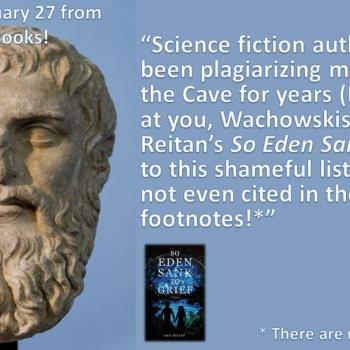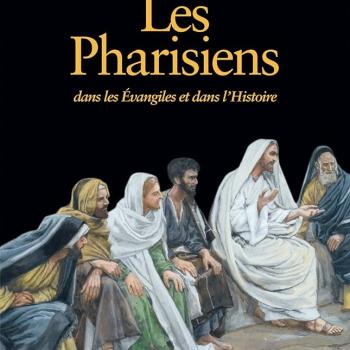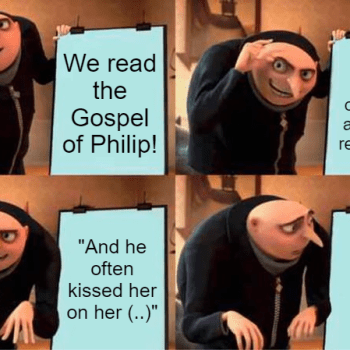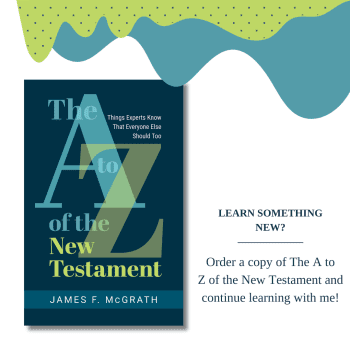I am grateful to have the opportunity to participate in the Patheos Book Club this month, focused on Devin Brown’s book The Christian World of The Hobbit
.
A book by this title might seem to some to be precisely the sort of book that they typically gravitate towards or make a concerted effort to avoid. But to both sorts of readers, I would like to emphasize that Brown’s book is distinctive, not least because of the distinctive and subtle-yet-profound way that Tolkien’s own writings relate to his Christian faith. This is not the sort of book that identifies Christ or Satan figures and other types, turning a work (whether the author is likely to have approved or not) into an allegory of a particular faith. This is because Tolkien’s work is profoundly Christian not in its specific images but in its core values (see especially pp.28-34 on Tolkien’s dislike of allegory, and thus of attempts by readers of Lord of the Rings to interpret what he wrote allegorically).
As a result of Brown’s close attention both to Tolkien’s writings – not only The Hobbit nor even his fictional novels alone, but Tolkien’s own writings about himself, his faith, and his writings – the result is a text which offers an insightful thematic literary analysis which works with the grain of the literary material under discussion, rather than forcing it into a mold alien to the author’s vision.
Middle Earth has seemed to some a place of Christian typology and to others a world devoid of God. For Tolkien himself, the world he envisaged was (as he wrote in a letter concerning Lord of the Rings) “fundamentally religious and Catholic…unconsciously so at first, but consciously in the revision” (quoted Brown, p.24). The entire first chapter explores this dynamic but very fine line that Tolkien seems to have managed to walk with such balanced poise. Precisely through its avoidance of explicit religion – cults, rituals, and blatant references to one or more deities – his books manage to highlight implicit religion – with themes which are the focus of the book’s later chapters, such as morality, values, and providence.
Chapter 2 focuses on “luck” in Middle Earth. Brown notes that references to luck and chance are often qualified with additional phrases: “chance…if chance you call it.” Unless one posits the activity of an unseen but real power at work in Middle Earth, then one would probably have to conclude that the role luck plays in the stories is far fetched, and some have concluded just that. But Brown, in conversation with other interpreters of and commentators upon Tolkien’s works, argues that what is seen here is not a lack of plausibility or imagination on the part of Tolkien as author, but providence.
Chapter 3 looks at aspects of characters’ development, while chapter 4 looks at the moral fabric of Middle Earth. The two are difficult to separate, hence my considering them together. Some have accused Tolkien of creating characters who are unrealistic in their moral alignments – either pure goodness or pure evil. But once again Brown offers a more convincing and sympathetic reading, which concludes that the world Tolkien depicts is one where there are moral absolutes, but the characters do not align solely on one side of the dividing line or the other, but clearly genuinely struggle with what they ought to do.
Chapter 4 focuses on the impact of Tolkien’s fictional writings, and the discussion that resulted on topics such as the appropriateness of frightening monsters and profound sadnessin literature which is aimed at least in part at children. Tolkien, echoing G. K. Chesterton, suggests that children inhabit the real world, tinged with terrors and tragedies. Children therefore do not need to be sheltered from such elements in stories, but rather need a positive depiction of the possibility of undergoing and surviving hardship and loss, and of defeating monsters and other terrifying foes (pp.168-169).
The book abounds with helpful insights on many themes and plot lines that run through Tolkien’s talks about Middle Earth, and about the broader genre of fantasy and how it can assist us in finding wonder again in our own real life by moving mundane things into a new setting where we can see them in a new light. Brown manages to tackle not only The Hobbit but The Lord of the Rings
, Tolkien’s writings about his literary products, his interactions with C. S. Lewis, and much more.
This is not merely a book written by a Christian for other Christians to highlight the Christian aspects of Tolkien and The Hobbit. It is an analysis of the worldview of this much-loved author and how that worldview shaped and pervades his storytelling. And so I highly recommend it not only to those who want to connect Tolkien’s novels to a Christian faith of their own, but to anyone who wants to explore the themes and vision which have made Tolkien’s tales so widely enjoyed and appreciated.
Reading Brown’s book has made me want to go back and read The Hobbit and Lord of the Rings all over again. Surely that is a sign of good writing about writing – that it makes you want to go read the literature being discussed?
If you want to find out more about the book and its author, Patheos blogger Deborah Arca has interviewed Devin Brown in this video:

















